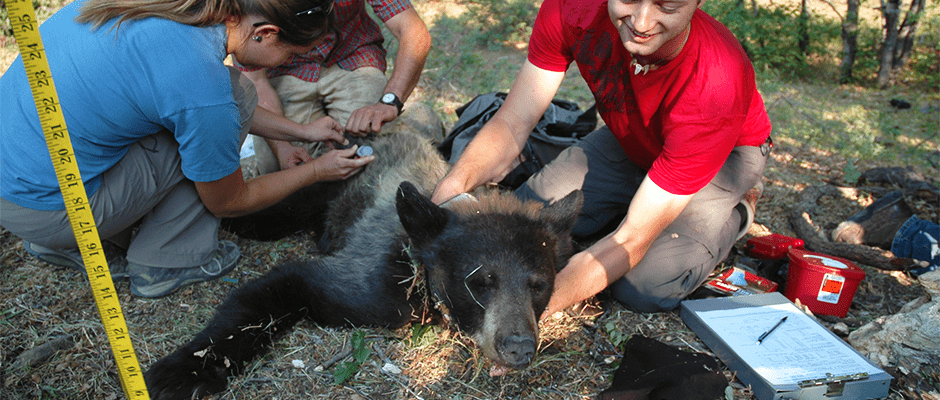Share this article
Colorado study may change bear management practices
A six-year study of black bears (Ursus americanus) in Colorado sheds new light on the roots of human-bear conflicts and could lead to changes in how bears are managed to reduce these run-ins.
The study found that bear encounters don’t decrease even if bear populations fall and that bears don’t necessarily become habituated to human food sources. Those two findings upend common wisdom about bears that has largely guided how wildlife officials manage bear populations around humans.
“Bears are really dynamically changing in response to changes in the landscape,” said TWS member Heather Johnson, a biologist with Colorado Parks and Wildlife, who led the study. “Human development. Climate. All these things are influencing the way the bears behave, and these things could have an impact on how many conflicts we see, and what we are likely to see in the future.”
Those conflicts between humans and bears may increase, the study found, if climate change brings warmer winters and continues to shorten hibernation periods, leaving bears roaming the landscape longer.
The study took place around Durango, in southwestern Colorado, where bear encounters have been on the rise as residential areas expand into bear habitat. Researchers collared and monitored 40 bears at a time and collected hair samples for genetic testing.
“We were able to get a really good picture of what was happening with the bear population,” Johnson said.
Meanwhile, the biologists also gathered data on the conditions of the forage the bears depend on. And they collected information on the human side of the equation, conducting surveys on attitudes toward bear encounters and monitoring how well residents followed bear-proofing ordinances. They conducted an experiment, providing residents in two neighborhoods with 1,100 bear-resistant trash cans to compare bear issues there with two control areas that did not receive the trash cans.
The study period spanned a severe natural food shortage in 2012, which was followed by a dramatic drop in bear populations, from 200 females to 82.
“In that year we observed a huge switch where bears foraged on human food,” Johnson said.
It wasn’t just nearby bears that came in search of food, she said. “We had bears pick up and move 15 miles to use human food if they didn’t have food in the forest, and then move back.”
The findings suggest that lethal removal of bears may not be an effective tool for reducing human-bear conflicts, Johnson said, and that it could have bigger impacts on bear populations than biologists previously believed, particularly in years when natural foods are scarce.
“If you see increasing conflicts, the knee-jerk reaction is to increase harvest to reduce the problem, but we don’t have great evidence that that really works,” Johnson said.
In years when food is scarce, conflicts seem to rise even if bear numbers are reduced by hunters, she said. In years with more plentiful food, bears that once relied on human food sources return to the wild to eat, she said, suggesting that even practices of trapping and translocation so-called “problem bears” may not be that helpful.
“Bears definitely perceive a risk in town associated with people and human structures,” Johnson said. “If you have good food in the forest, it’s not worth it for most bears to take that risk.”
On the other hand, Johnson’s bear-proofing experiment demonstrated that reducing garbage and other attractants seems to be effective in reducing run-ins with bears. That may become increasingly important if climate change brings a rise in temperatures to the Rockies that keeps bears active longer. By 2050, the average length of hibernation could decrease by between 15 and 40 days based on expected increases in temperature, meaning more time for bears and humans to collide, she said.
“We need to continue to focus on human behavior, getting people to lock away their attractants and making sure that human food is not available to bears,” Johnson said. “If we can do that, and reduce the forage benefit, we can hopefully discourage bears from coming around human development.”
Header Image: Colorado Parks and Wildlife biologists Keara Sandy, Tom Day and Luke Vander mark a black bear as part of a study of six-year study of bear behavior in Colorado. ©Colorado Parks and Wildlife








